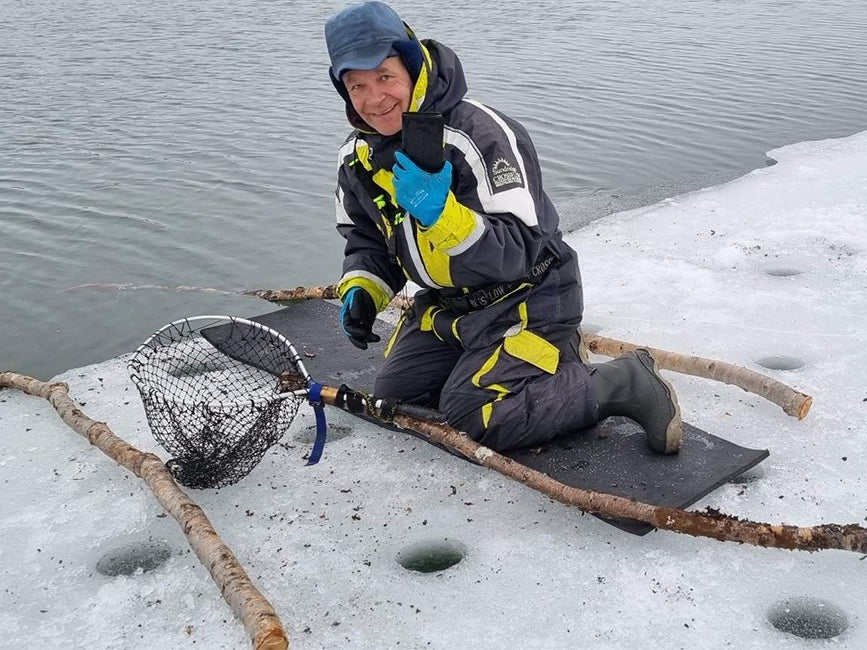The phone was accidentally dropped into a fishing hole in the frozen Kalix River in Sweden. With an IP-68 rating, the Galaxy S23 Ultra is only made to withstand submersion in water up to a depth of 1.5 meters for 30 minutes. This particular phone, however, remained three meters deep for over five hours.
The owner was eventually able to retrieve the device using a summer fishing net tied to a birch rod. Despite the environment it had been subjected to, the S23 Ultra powered on immediately and showed the owner some notifications as if nothing had happened. Even more impressive was the fact that the phone apparently didn’t need to be rebooted or dried.

A fishing net was used to retrieve the phone. | Image credit — Samsung
The owner of the S23 Ultra shares that, during the phone’s time in the river, he was terrified of losing every digital thing he held dear.
At that moment, I felt like I had donated my entire digital life to the river — photos, ID, credit cards and all my apps gone in an instant.
The entire ordeal is a fascinating look at just how much more robust modern devices are than we give them credit for. If the Galaxy S23 Ultra had never booted up again, Krekula wouldn’t have questioned the phone’s build quality. But despite enduring stress that it wasn’t made for, the Ultra showed off just how rugged Samsung’s phones have become.

Samsung’s largest rival in the U.S., Apple, also uses IP-68 ratings for the entire iPhone 16 lineup. The Google Pixel 9 lineup also has the same rating, though there have been reports over the years of Pixel phones not faring too well when exposed to the elements. Chinese flagships, which usually provide more hardware for less money, also stick to IP-68 ratings for the most part.
The Galaxy S23 Ultra’s little adventure to the bottom of the river just confirms that its successor, the S25 Ultra, is definitely one of the best smartphones of 2025.

